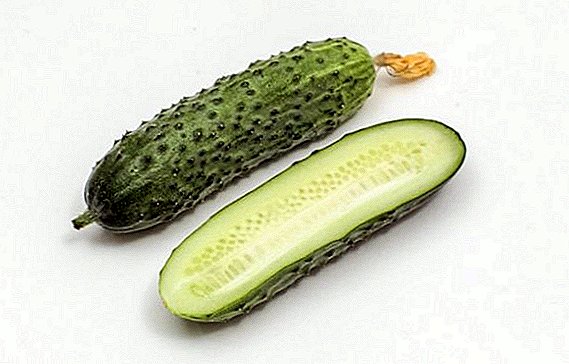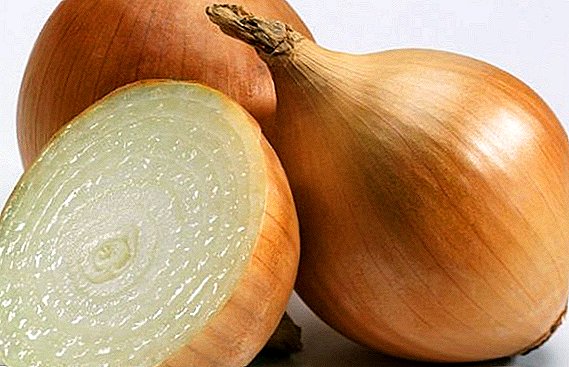
Evergreen plant - ficus "Lirat". Very beautiful fit into the home environment, as well as emphasize the elegance of the office.
Ficus will protect the owner from negative energy, bring well-being into the house.
Ficus "Liruidny" from the mulberry family, in which there are approximately 900 species.
The difference between them lies in the variety of foliage and plant size.
general description
Lirata from the tropical forests of Africa. In nature, it reaches 13 m high At home, pruning the crown, achieved a compact form of the tree. Growth can also be reduced by placing the ficus in a small pot. On average, it grows up in height of 2.5-3 m.
The name ficus "Lirat" was due to the similarity of the leaf with the silhouette of the lyre. It has wide leaves with distinct veins and wavy edges. Streaks of light green color stand out against the dark background of the sheet.
The base of the leaf is narrower, the top is rounded. Leaf grows 35-50 cm long and 22-25 cm wide. The surface of the sheet is glossy, requiring constant care.
Foliage it is necessary to spray every 2-3 days or wipe with a damp cloth. The trunk of the ficus "Lirat" is straight, rough, brown in color with a gray tinge. Rare aerial roots depart from the trunk, eventually growing into the ground.
Home care
Ficus "Lirata" need the right care. Conditions of detention must be brought closer to the natural. Any change in conditions is fraught with dropping foliage.
Care after purchase
 Before buying ficus "Lirata" you need to decide where it will be. He does not like to move.
Before buying ficus "Lirata" you need to decide where it will be. He does not like to move.
This can cause foliar drops. As a permanent place suitable solar space, which is constantly aired. Direct sunlight should not fall on the foliage. It is best to place the pot at a distance 1-1.5 m from the window.
Be sure to transplant the tree in the new soil, as the store soil is not suitable for permanent growth. It is necessary to transfer into a new pot carefully, without destroying an earthen room and without breaking the root system. Do this no later than 5 days after the purchase. After transplantation, special attention should be paid to soil and air moistening.
Watering
Since “Lirat” is from tropical forests, watering should be abundant. Pour water until it appears in the pan, the excess remove after 20 min. Moisturize the soil when the top layer dries.
Important! For watering you need to use warm water. Before watering, it should be no less than a day.
Optimum air humidity for ficus lyre - 70%. To maintain the humidity of the air regularly spray the leaves. In winter, wipe them with a damp sponge. You can also put a container with water near the tree.
Bloom
Ficus blooms rarely. The flowers themselves are homely. They are hollow spherical inflorescences - syconia, inside which are male, female and gall flowers. Wild wasps are engaged in pollination.
They enter the inflorescence through a hole at its top. At home, even with rare flowering, pollination does not occur.
Crown formation
 To give the tree a decorative look, it is necessary to trim the crown.
To give the tree a decorative look, it is necessary to trim the crown.
This is done with a sharp garden knife or scissors. Removed part of the twigs with leaves. In place of the cut juice will appear, it must be washed off. Cut the wood ash.
By doing pruning crown, rejuvenation and improvement of the plant is made. In place of dry or weakened shoots will grow new, stronger. When removing the apical shoots develop lateral.
Cutting off the ficus in the winter months, the expected effect will not work.
After pruning, fertilizer is applied to the soil.
Soil and soil
For the preparation of earthen mixture for young plants is taken in equal quantities of turf and leaf soil, peat and sand. For an adult plant, they increase the content of sod and humus by adding two more parts. To disinfect the soil, you can add one part of the wood ash.
Planting and transplanting
It is necessary to replant the ficus "Lirat" every spring. Adult tree transplanted once in 2 years. The pot is chosen a little more than the previous one. The bottom must be laid drainage. For this you can use expanded clay or charcoal.
After the transfer of ficus to the new soil fertilizer must be made. In the spring and summer months fertilize the soil once every 14 days.In the autumn sufficient once a month. In the winter months it is worth refusing to fertilize the soil.
Breeding
 For breeding, you can use cuttings. To do this, cut a woody twig, 13-15 cmwith a couple of leaves. Rinse the cut under running water. Then put the sprig in a container with water until the roots.
For breeding, you can use cuttings. To do this, cut a woody twig, 13-15 cmwith a couple of leaves. Rinse the cut under running water. Then put the sprig in a container with water until the roots.
Can be used for germination wet sand. After the appearance of the roots, the stalk is planted in a permanent pot. Be sure to cover with a glass jar. Periodically, a young plant needs to be watered and tempered. After the appearance 2-3 leaves of the bank is removed.
Another method of reproduction - layering. An incision is made on the trunk about 5 cm below the leaf. A matchstick dipped in a hormonal solution is inserted into it. Put wet moss on top and roll over with film. After 2-3 months, the roots will sprout. After that, the petiole is cut below the formation of roots and planted in the ground.
Temperature
The optimum temperature in the summer - 22-28 degrees. In the winter in the room should be 16-22 degrees. When temperature drops drop foliage is possible.
A photo
In the photo ficus "Lirata":





Benefit and harm
When contacting the plant, it is advisable to use protective gloves. Ficus juice can cause an allergic reaction.
Attention: ficus "Lirata" is contraindicated in the house to people suffering from bronchial asthma.
But still this tree plant does more good than harm.
On the basis of the juice of lyric ficus produced a lot of drugs and ointments. They are used to treat female diseases. Hemorrhoids, sciatica, osteochondrosis, arthritis are also treated.
Scientific name
The ficus "Lirata" has a scientific name - Ficus lyrata. It is increasingly common in homes, becoming the decoration of offices.
Diseases and pests
Quite often, ficus leaves falling off. The reason may be stress after purchase or transfer to a new pot.
When excessive watering occurs yellowing, withering and fall of the foliage. When there is a lack of sunlight, the leaves become pale.
Plant growth also slows, the branches are being pulled.
Brown specks on leaves can cause sunburn. Among the pests most common are mealybugs, scutes, and spider mites.
To get rid of pests need to use a soap solution with the addition of medical alcohol. Chemicals are used for heavy lesions.
Lyre Ficus with proper care will be the perfect decoration for your home or office. And also bring prosperity and well-being to their owners.












